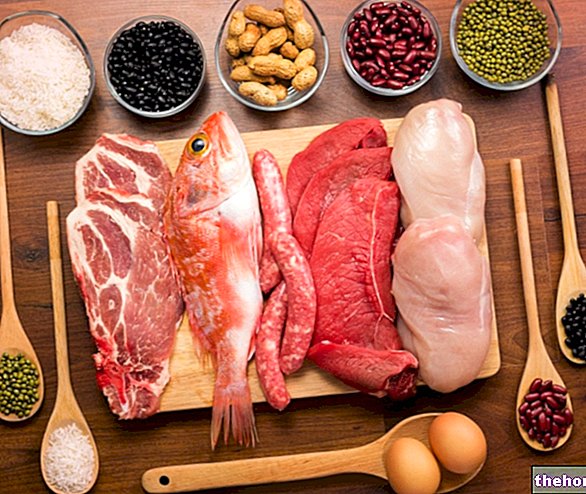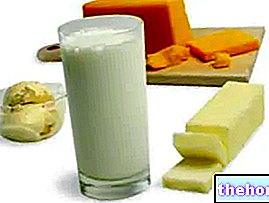"Carbohydrates
Functions of carbohydrates
Carbohydrates represent our main energy source especially during intense physical activity. They also have a plastic function and are involved in the formation of nucleic acids and nervous structures.
After being transformed into glucose, carbohydrates can go into three different metabolic processes:
they can be used by cells for energy
they can be stored in the liver and muscle reserves in the form of glycogen
they can be transformed into fat and deposited as such, if the glycogen stores are saturated
There are amino acids, vitamins and essential fatty acids but there are no essential carbohydrates. However, the role of carbohydrates in our body is fundamental. The central nervous system alone needs about 180 grams of glucose per day to perform its functions optimally. Some blood cells (red blood cells) and the adrenal medulla also use glucose exclusively as their primary energy source.
If needed, our body can obtain glucose from the carbonaceous skeleton of some amino acids and from the glycerol contained in fats. In conditions of extreme glucose deficiency (prolonged fasting) this process leads to the formation of toxic substances, the ketone bodies that lower the blood pH with serious consequences for the organism.
Blood sugar regulation
Glycemia represents the amount of glucose present in the blood (mg / dl). The human organism has a series of mechanisms capable of keeping it relatively constant throughout the day (about 70 mg / dl fasting) regardless of the amount of carbohydrates consumed in the diet.
The liver is the main organ involved in the regulation processes: when the blood sugar is lowered it releases the glucose contained in the hepatocytes, when it rises it stores it in the form of glycogen. This allows to keep the muscle protein stores intact.
Excess of carbohydrates, the glycemic index
Generally the diet of industrialized countries is very rich in carbohydrates. In particular, in the latter, extensive use has been made of simple carbohydrates, i.e. mono and disaccharides that are added during preparation to sweeten foods.

The glycemic index (GI) represents the rate at which blood sugar rises following the intake of 50 grams of carbohydrates. The higher the glycemic index, the faster the absorption of carbohydrates.
Simple sugars (high GI) enter the circulation very quickly, making it necessary to have an "overproduction of insulin, which in the long run can lead to a functional decline of the cells responsible for its production (diabetes). The abrupt drop in blood glucose that follows in addition to fatigue the subject, making him more tired and less concentrated, leads to a premature onset of the hunger stimulus, thus entering a vicious circle that can easily lead to obesity.
Carbohydrates - Chemistry, Functions, Carrier Foods
Problems with playing the video? Reload the video from youtube.
- Go to the Video Page
- Go to Wellness Destination
- Watch the video on youtube
Carbohydrate deficiency, high-protein diets
Given the negative consequences of a high-carbohydrate diet, many very low-carbohydrate dietary models have been proposed in the last decade. The extreme reduction in carbohydrates, however, is not without side effects.
The excess of proteins and fats increases the danger of hypercholesterolemia, liver and kidney diseases and some cancers. In addition, in the case of extreme carbohydrate deficiency, ketone bodies are formed (as occurs in untreated diabetics) which acidify the blood and can lead to a coma.
It is therefore necessary to find the right balance between the levels of intake of the various nutrients, without excluding any a priori.
How many carbohydrates?
We have seen the danger of both an excess and a lack of carbohydrates.
The Mediterranean diet provides for a carbohydrate intake varying between 55 and 65% of the daily caloric intake. At the same time, the consumption of simple sugars should not exceed 10-12% of the total daily energy.
However, in the light of the latest research in the food sector, we recommend sticking to the lower limit of this range, that is to introduce a daily quantity of carbohydrates between 50 and 55% of the total energy and trying to limit the consumption of carbohydrates as much as possible. simple.
Green light therefore to the consumption of foods rich in fiber such as vegetables and unsweetened fruit. Yellow light for starchy foods such as bread, pasta and rice; red light for refined sugars (honey, sugar, glucose and derivatives such as glucose and maltose syrup).
Carbohydrates and sports
During intense physical activity, our body almost exclusively uses glucose to meet the increased energy demands. It is therefore very important that the athlete's diet provides the right amount of carbohydrates. However, a distinction must be made between endurance sports and power sports.
If in the former (cycling, walking, cross-country skiing, running, etc.) the recommended daily intake is 55-65% of the total energy (depending on the frequency and duration of the workouts), in the latter it is good to stay in the intervals. recommended for the sedentary population (50-55%) by increasing, if anything, the protein intake.
See also: Diet and carbohydrates
Artificial sweeteners
Fructose
Carbohydrates




























